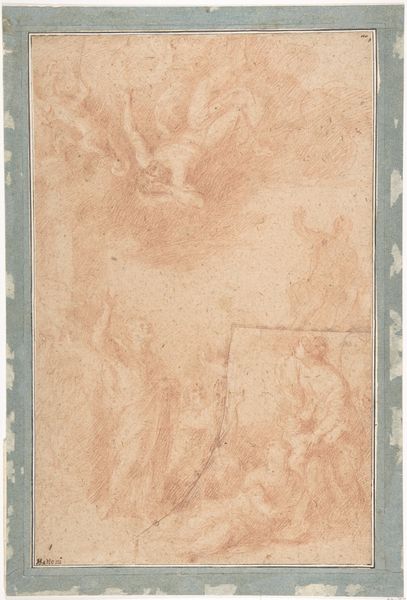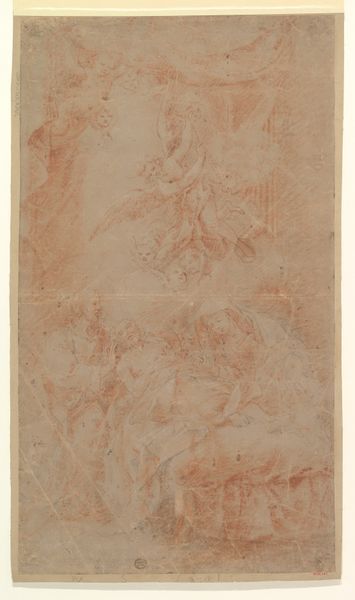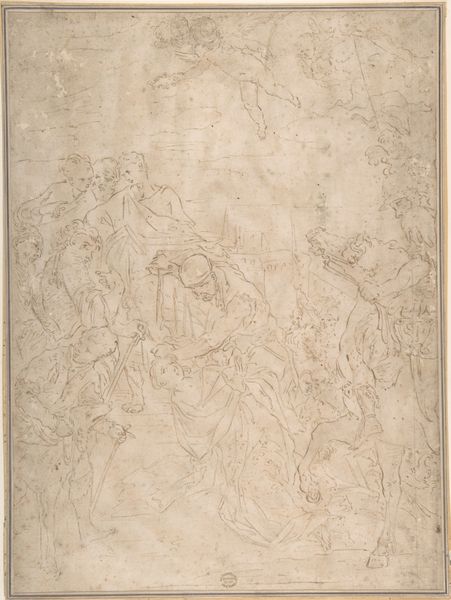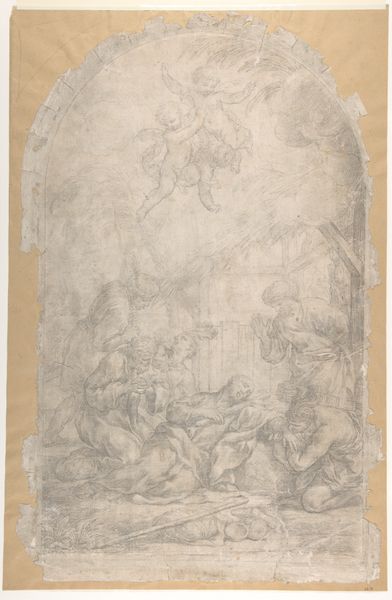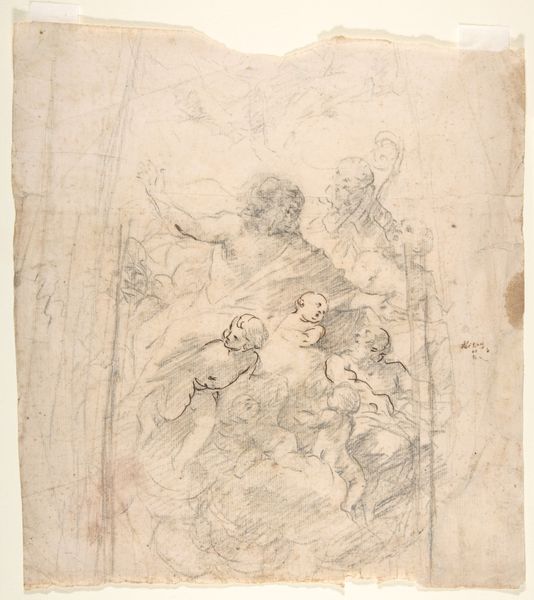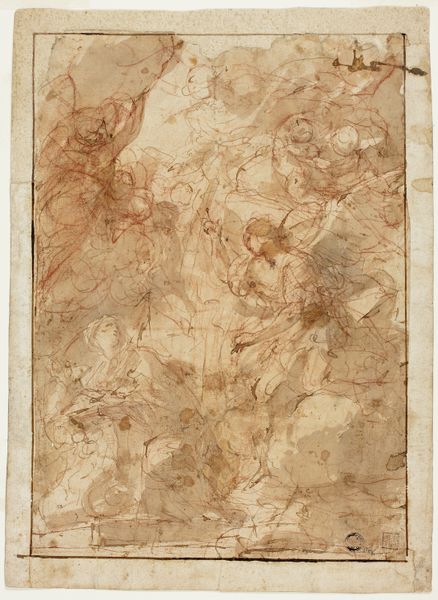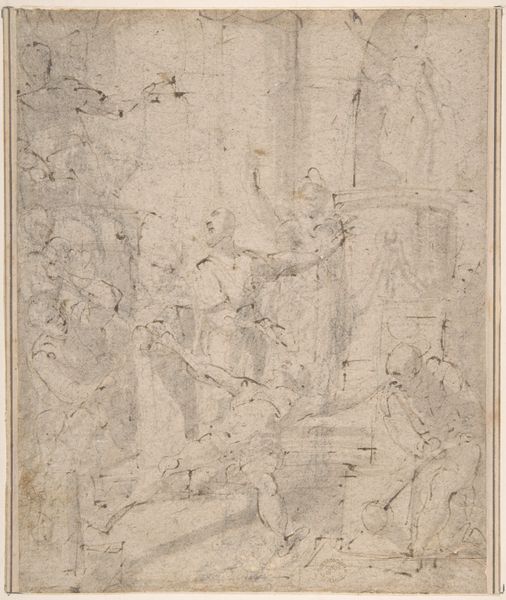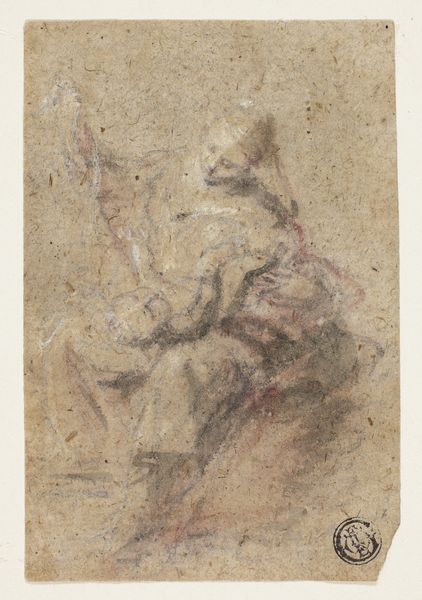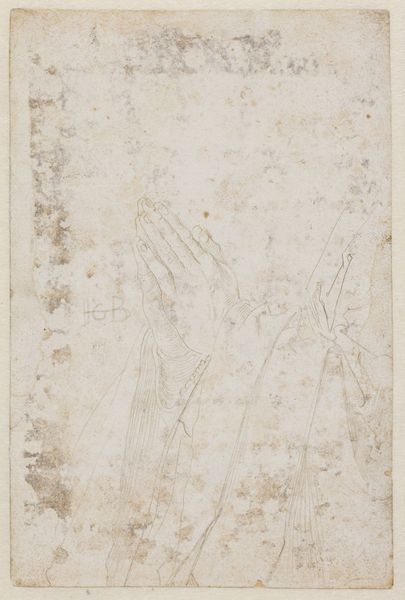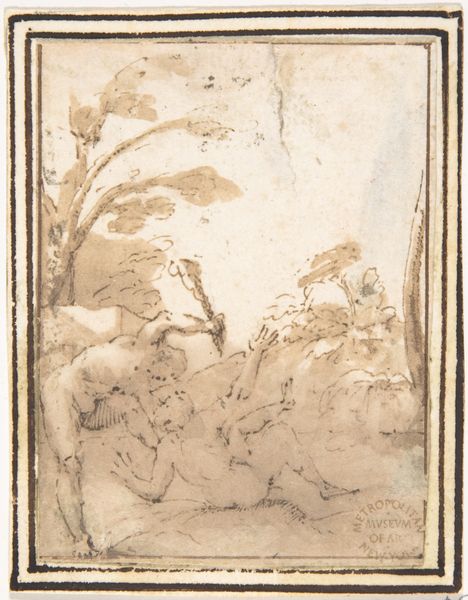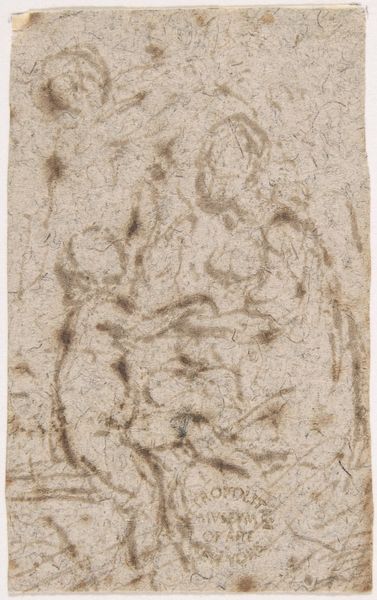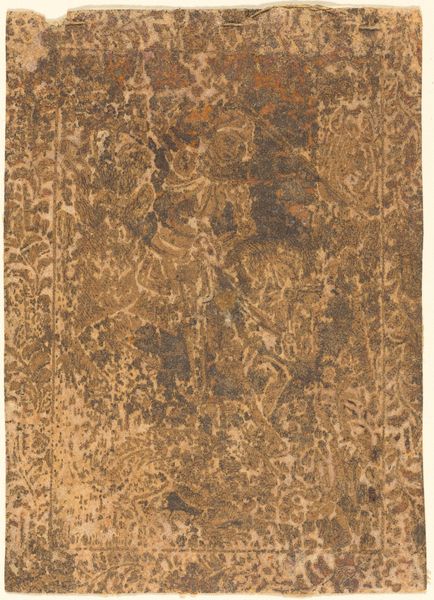
drawing, print, watercolor
#
drawing
#
water colours
# print
#
human-figures
#
figuration
#
11_renaissance
#
watercolor
#
crucifixion
#
history-painting
#
italian-renaissance
#
watercolor
Dimensions: 7-1/2 x 5-5/16 in. (19.1 x 13.5 cm)
Copyright: Public Domain
Curator: Here we have "Crucifixion," a drawing dating from 1500 to 1600, currently residing at the Metropolitan Museum of Art. The museum credits its creation to an anonymous artist. It employs materials such as watercolor and print. Editor: What strikes me first is its ethereal quality, a faded wash almost. It feels incredibly raw, immediate. The energy is chaotic yet powerfully restrained by the central figure. Curator: I'm particularly drawn to the process by which such prints circulated. These weren’t just devotional images, but commodities, tied to the economy of religious art at the time. And watercolor? A relatively accessible medium, suggestive perhaps of wider distribution or personalized devotion. Editor: Yes, there's an accessibility here. But the crucifixion imagery itself has a deeply ingrained iconography, you know? The suffering, the redemption. Notice the figures at the base of the cross, a mix of sorrow and detachment, reflecting humanity’s complex relationship with faith. Curator: I'd counter that those figures at the base are equally reflective of labor, though. Consider the production required to make copies accessible; there's repetitive, grueling labor that ultimately defines who can even receive this message of the crucifixion, even if the intention is sacred and widespread. Editor: I agree, that's a valid point, and it would affect distribution but it all feeds back into reinforcing existing ideas of sin, penance, and salvation; images wielded cultural influence that goes beyond pure function. The composition directs our eye inexorably to Christ. The way light and shadow are used here lends emotional intensity and deepens those ingrained symbols. Curator: Right. These are certainly tools available to disseminate meaning within very structured environments. What is truly moving or innovative, however, in this anonymous creator, that they opted to replicate it through printing on readily acquired materials rather than other precious art, so people of all backgrounds could observe. Editor: It all reinforces how deeply intertwined these facets really are; art object and the symbolic language; one shaping the other over time. Curator: Exactly, and together, these ideas enable further inquiries, if we consider more than just traditional religious ideas around making the artwork. Editor: This examination helps highlight that regardless of process, there's a rich well of visual cues ready to draw the mind to ponder these essential aspects of humanity and their enduring influence.
Comments
No comments
Be the first to comment and join the conversation on the ultimate creative platform.
